In this lesson, we’re going to have a look at chord inversions. A good grasp of inversions is one of those things many guitarists lack. Inversions can be daunting at first, but they seem a lot more complex than they really are.
Here’s why chord inversions are useful:
- Inversions open new possibilities and enable you to add more variety to your comping.
- You’ll discover new chord sounds.
- You get to know the fretboard better because you can visualize the harmony on more places of the fretboard. This is also important for single-note soloing.
- Inversions play an important role in chord/melody arrangements.
If you are new to jazz guitar chords, check out this lesson about basic jazz guitar chords first.
What Are Chord Inversions?
Inversions are chords that don’t have their root note in the bass. Instead they have the 3, 5, or 7 as the lowest note of the chord shape.
Chord inversions are written with a slash:
- For example: Cmaj7/E
- The notation on the left side of the / is the chord name (Cmaj7).
- The note on the right side of the / tells you which note is the bass note (E).
- Our example is a Cmaj7 chord with E in the bass.
All chords can be arranged in 4 positions: root position, 1st inversion, 2nd inversion, and 3rd inversion.
I’ll clarify this further with an example.
A cmaj7 chord has four notes (if this is new to you, check out our chord theory lesson first):
| Cmaj7 | C | E | G | B |
|---|---|---|---|---|
| 1 | 3 | 5 | 7 |
Every single one of these 4 notes can be played as lowest note in the chord:
- Root position: a voicing with the 1 in the bass
- 1st inversion: a voicing with the 3rd in the bass
- 2nd inversion: a voicing with the 5th in the bass
- 3rd inversion: a voicing with the 7th in the bass
Here is a chord voicing for Cmaj7 in root position.
This voicing is called root position because the root (aka 1) of the chord (C) is the bass note (lowest note). All other notes of the chord (E G B) are played as well, their order is not important.

To obtain the 1st inversion we have to make the 3rd of Cmaj7 (E) the bass note.
For the sake of convenience we pretend that the 6th string doesn’t exist and keep the bass note on the 5th string. The E on the 5th string is on the 7th fret.
If we only move the bass note, we would have a voicing like this:

This could be the 1st inversion because the 3rd is the lowest note, but there is a problem: there is a note missing in this voicing (the C), so the chord is not complete.
To get a complete chord, we are not only moving the bass note, but the upper notes as well:
- The G will go to the next chord note on that string, B
- The B will go to C
- The high E will go to G
So here’s the 1st inversion of Cmaj7, written as Cmaj7/E (C major 7 with E in the bass):

We continue in the same fashion and put the 5th (G) in the bass. The result is the 2nd inversion of Cmaj7 (Cmaj7/G):

Then, we put the 7th in the bass, and we get the 3rd inversion (Cmaj7/B):

Major Chord Inversions
Drop 3 Major Chord Inversions – E-string Bass Note
Root Position – Cmaj7
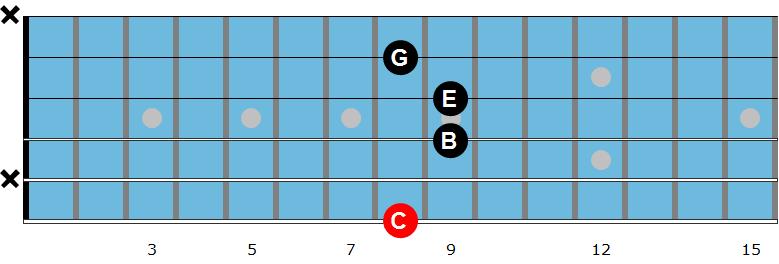
1st Inversion – Cmaj7/E
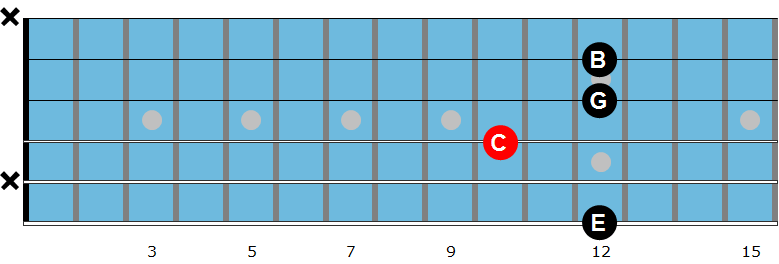
2nd Inversion – Cmaj7/G

3rd Inversion – Cmaj7/B
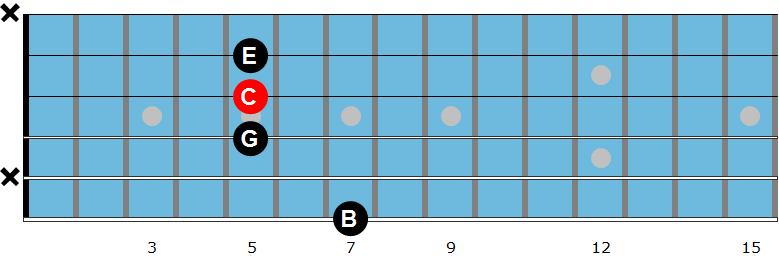
Drop 2 Major Chord Inversions – A-string Bass Note
Root Position – Cmaj7
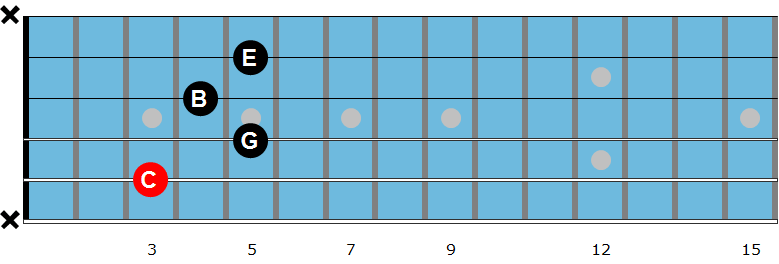
1st Inversion – Cmaj7/E
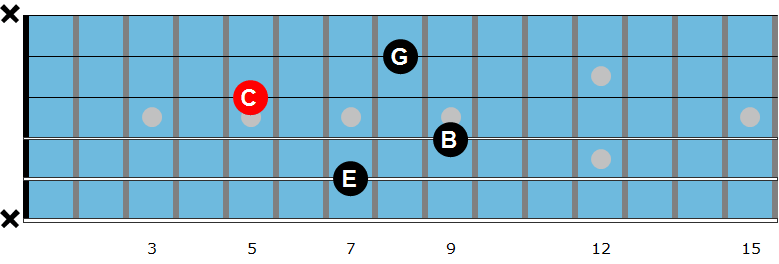
2nd Inversion – Cmaj7/G
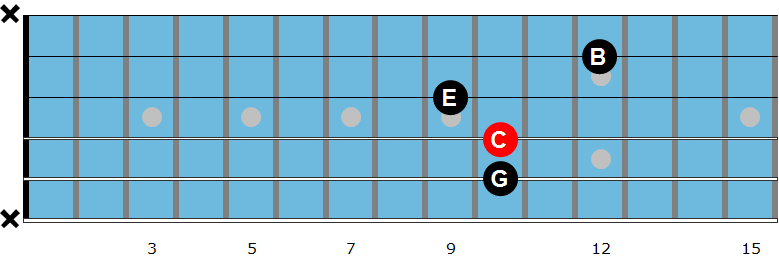
3rd Inversion – Cmaj7/B
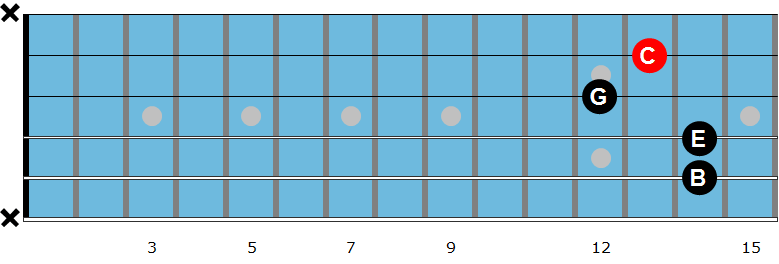
Drop 2 Major Chord Inversions – D-string Bass Note
Root Position – Cmaj7
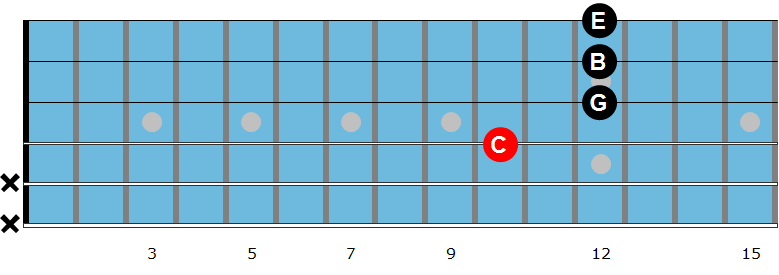
1st Inversion – Cmaj7/E
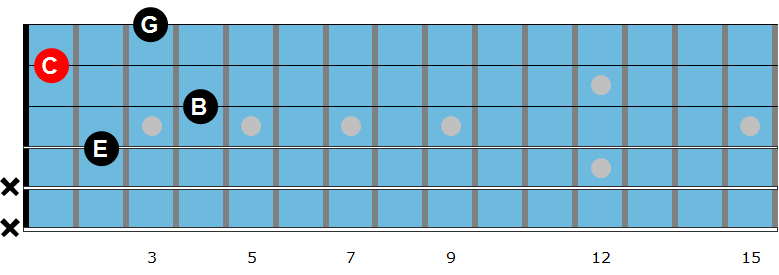
2nd Inversion – Cmaj7/G

3rd Inversion – Cmaj7/B

Minor Chord Inversions
Drop 3 Minor Chord Inversions – E-string Bass Note
Root Position – Dm7
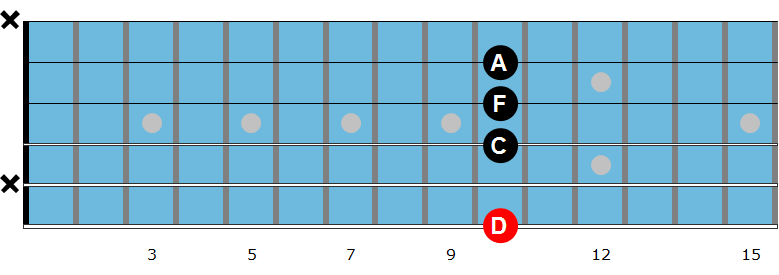
1st Inversion – Dm7/F
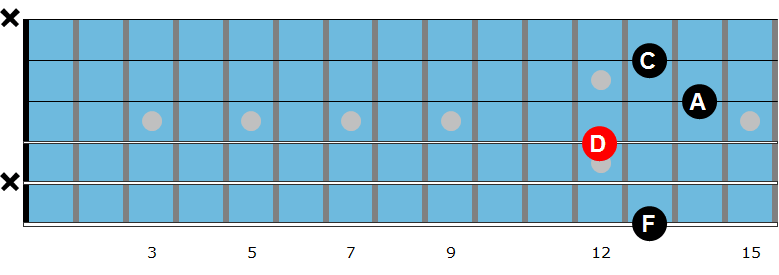
2nd Inversion – Dm7/A
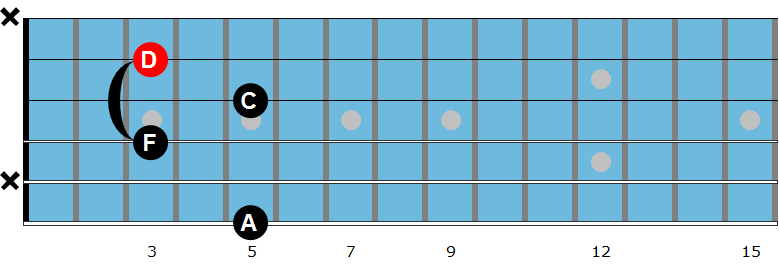
3rd Inversion – Dm7/C
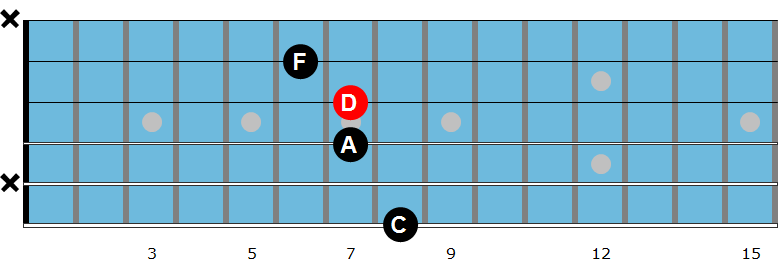
Drop 2 Minor Chord Inversions – A-string Bass Note
Root Position – Dm7
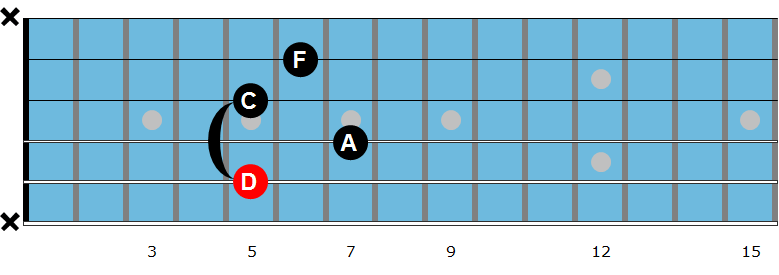
1st Inversion – Dm7/F
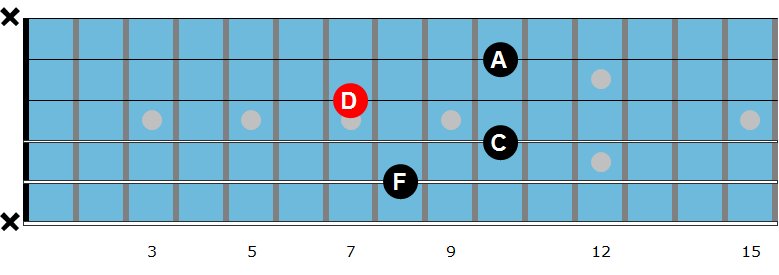
2nd Inversion – Dm7/A
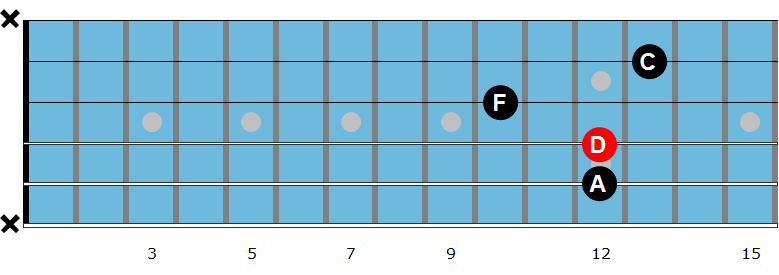
3rd Inversion – Dm7/C
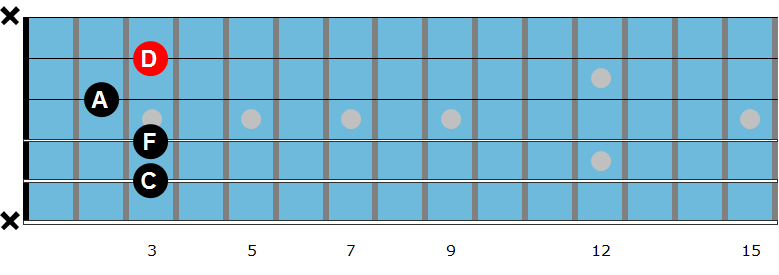
Drop 2 Minor Chord Inversions – D-string Bass Note
Root Position – Dm7
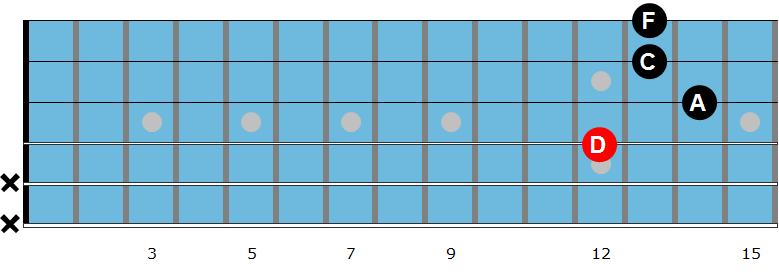
1st Inversion – Dm7/F

2nd Inversion – Dm7/A
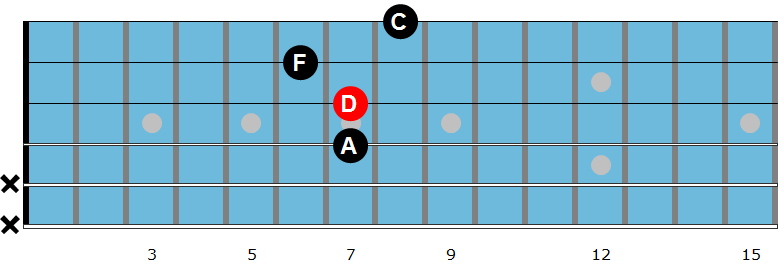
3rd Inversion – Dm7/C
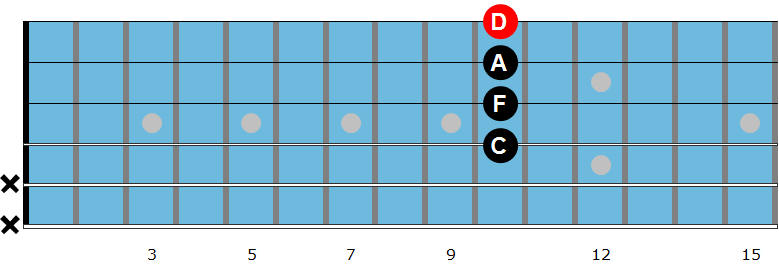
Dominant Chord Inversions
Drop 3 Dominant Chord Inversions – E-string Bass Note
Root Position – G7
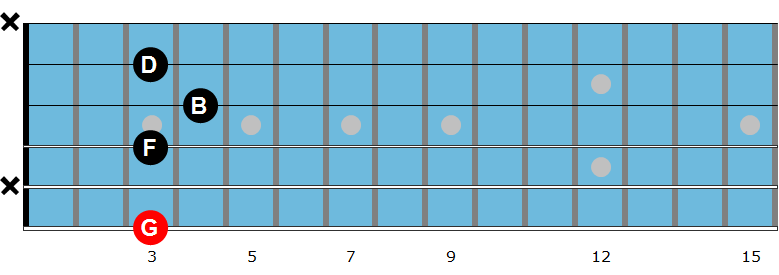
1st Inversion – G7/B
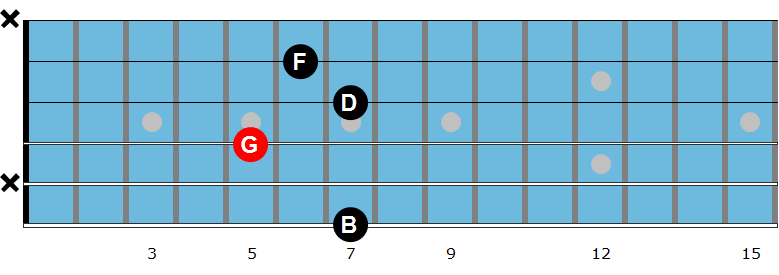
2nd Inversion – G7/D
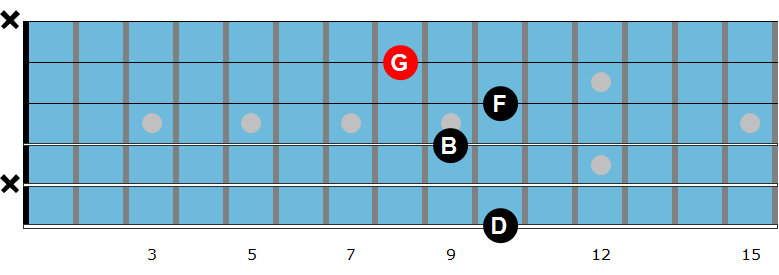
3rd Inversion – G7/F
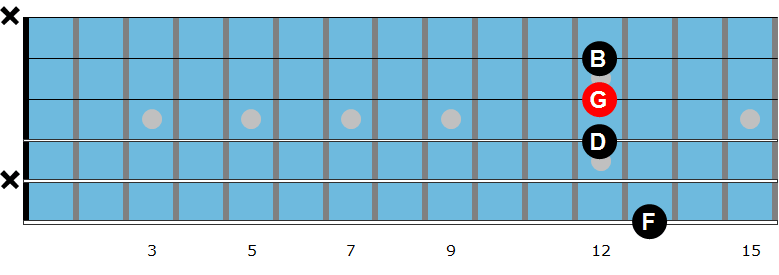
Drop 2 Dominant Chord Inversions – A-string Bass Note
Root Position – G7
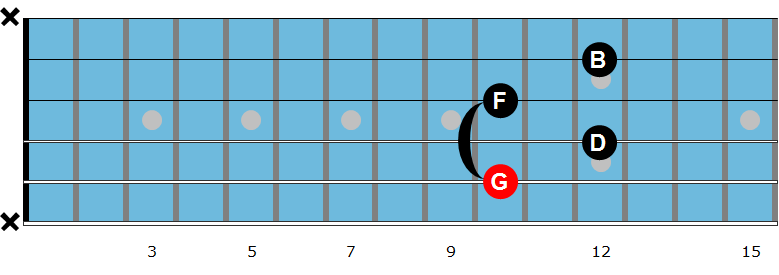
1st Inversion – G7/B
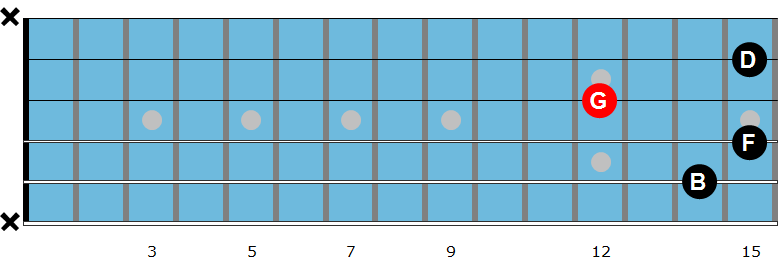
2nd Inversion – G7/D
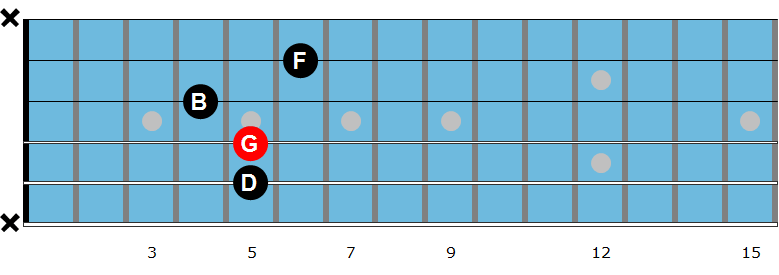
3rd Inversion – G7/F
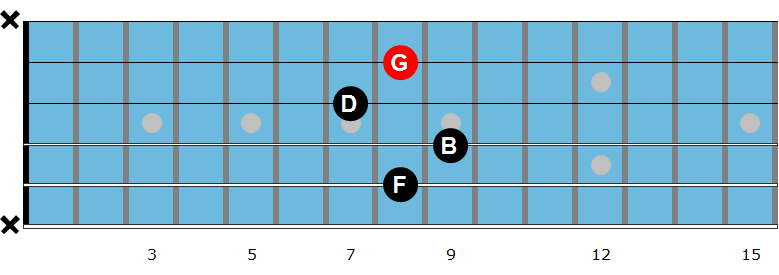
Drop 2 Dominant Chord Inversions – D-string Bass Note
Root Position – G7
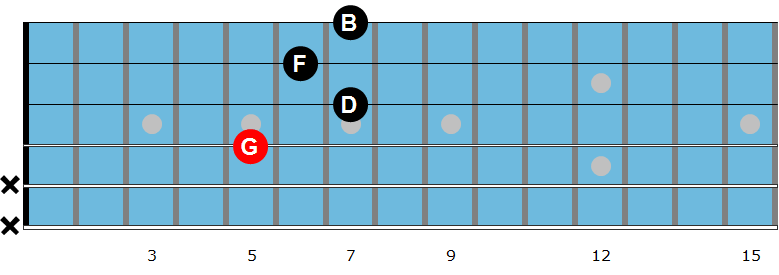
1st Inversion – G7/B
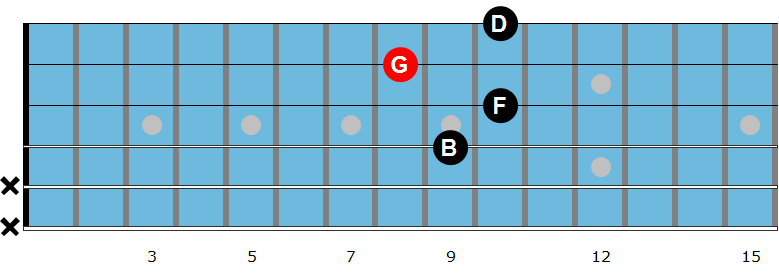
2nd Inversion – G7/D

3rd Inversion – G7/F
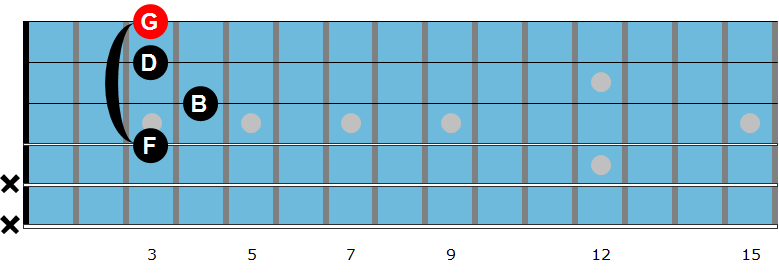
Half-Diminished Chord Inversions
Drop 3 Half-Diminished Chord Inversions – E-string Bass Note
Root Position – Bm7b5
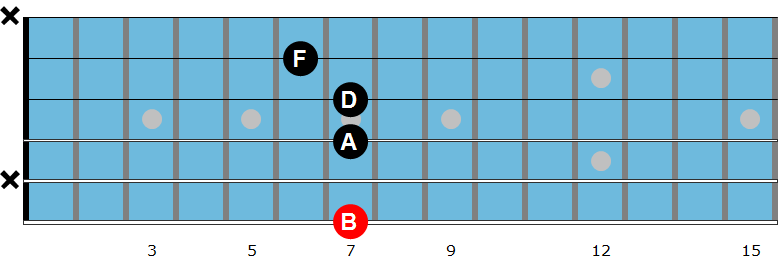
1st Inversion – Bm7b5/D
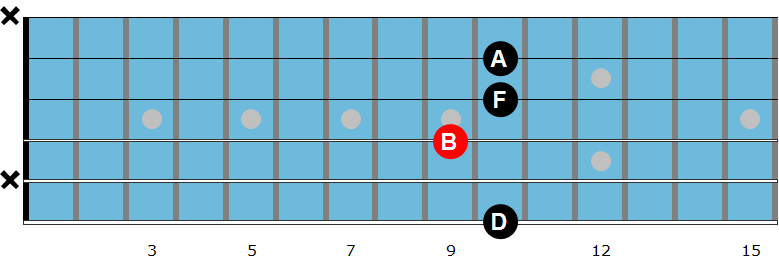
2nd Inversion – Bm7b5/F

3rd Inversion – Bm7b5/A
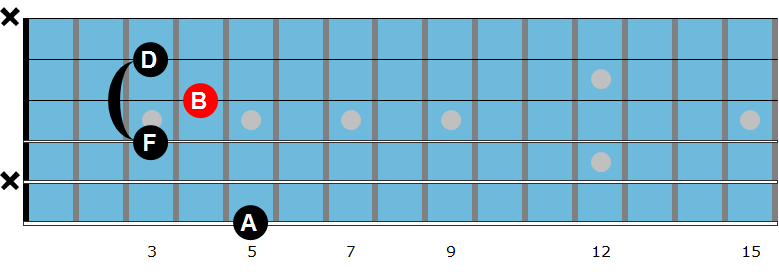
Drop 2 Half-Diminished Chord Inversions – A-string Bass Note
Root Position – Bm7b5

1st Inversion – Bm7b5/D
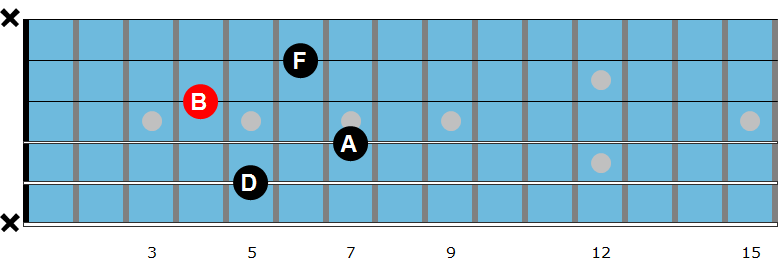
2nd Inversion – Bm7b5/F
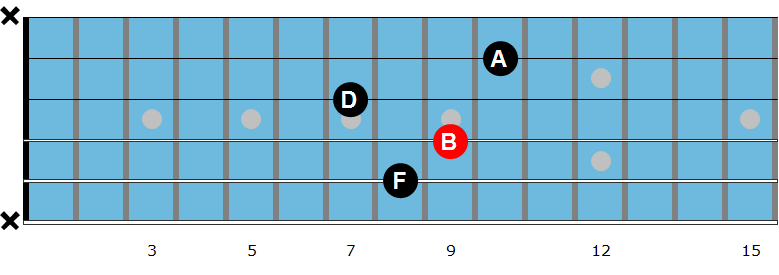
3rd Inversion – Bm7b5/A
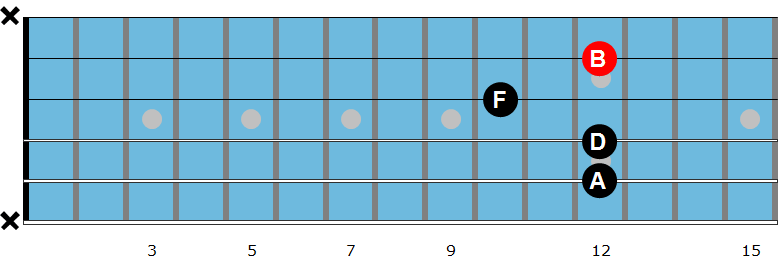
Drop 2 Half-Diminished Chord Inversions – D-string Bass Note
Root Position – Bm7b5
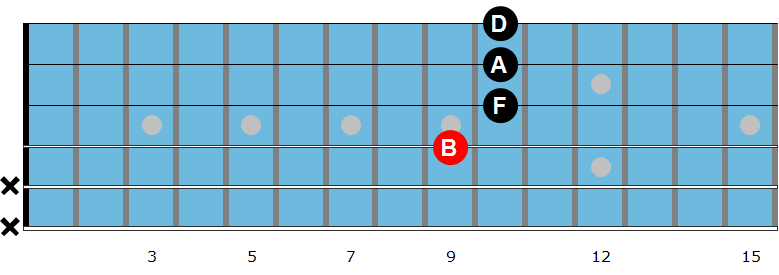
1st Inversion – Bm7b5/D
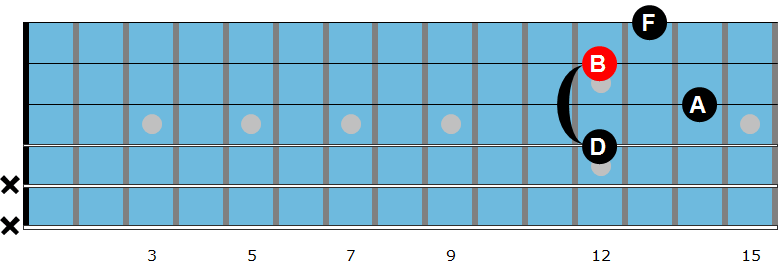
2nd Inversion – Bm7b5/F
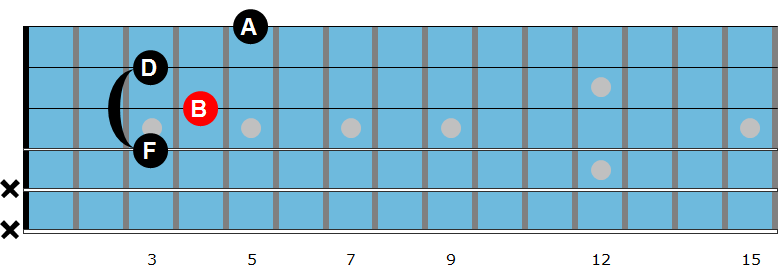
3rd Inversion – Bm7b5/A
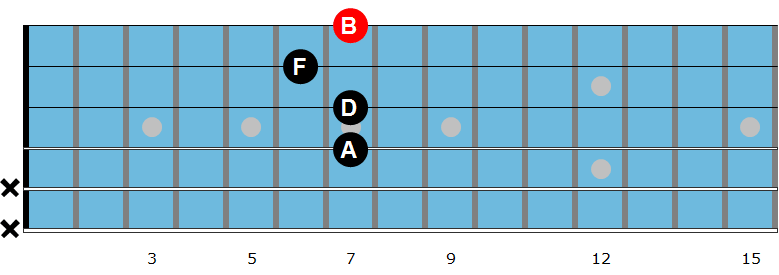
How to Practice Chord Inversions
Do you need to know all these chord inversions? The short answer is yes, the sooner the better. It seems like a lot to learn, but you’ll know them relatively fast.
The first step is to memorize all inversions.
Start at the top of the list: memorize the drop 3 inversions of Cmaj7.
Play the inversions as shown in the tabs below, each inversion lasting 2 counts. Using a metronome makes your time more effective because you are doing a timing exercise at the same time.
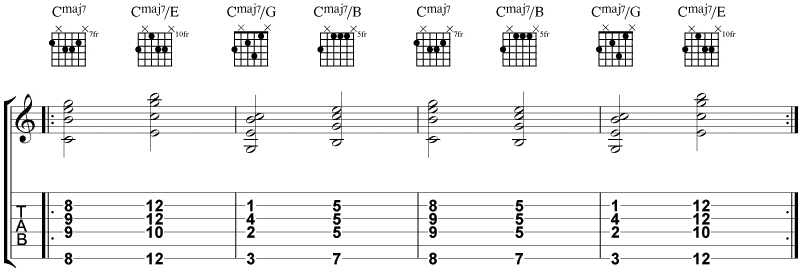
Now transpose this set of inversion to another key, G major for example:
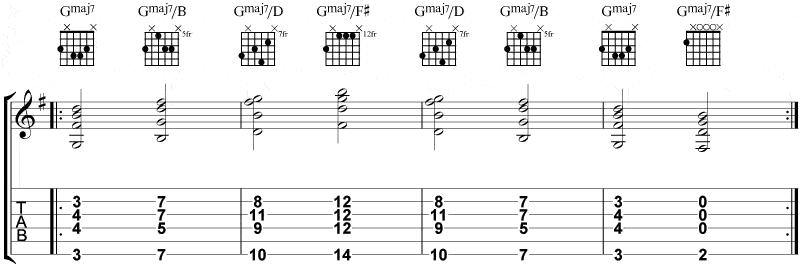
Do this for all inversions and in other important keys as well, such as F major, D major, A major and Bb major.
Applying Inversions to II V I Chord Progressions
II V I progressions are the bread and butter of jazz, so it’s a good idea to practice inversions on this chord progression.
A good chord exercise is to play 251s the following way:
- Start high on the neck, around the 12th fret, and play voicings going down the neck.
- When you reach fret 1 you start going up again until you reach fret 12. Then go down again…
- In the example below, I start with drop 2 chords on string-set 1-2-3-4.
- When I reach fret 1, I go to drop 2 voicings on string-set 2-3-4-5.
- When I reach fret 12, I switch to drop 3 chords on string set 2-3-4-6.
In the example below, we play a ii V I in C major, with a VI7 (A7) on bar 4 to go back to iim7 (Dm7).
| Dm7 | G7 | Cmaj7 | A7b9 |
| ii | V | I | VI |
How the exercise works:
- On bar 1, you start with the Dm7 in root position.
- To find the voicing for the next chord, find out if the current bass note (D) is a chord note of the next chord (G7) or not.
- If it is, you keep the bass note. In our example, the D is a common note between the two chords: D is the root of Dm7 and the 5th of G7. Because of this, we play G7/D, the 2nd inversion of G7.
- To find the voicing for the next chord (Cmaj7), find out if the bass note (C) is a chord note of the next chord (A7). In this case, there is no common note between the two chords. D is not a note of Cmaj7.
- In that case, we go down to the nearest chord note of Cmaj7: the C. So, we play a Cmaj7 in root position.
- For the following chord, I cheated a bit. Instead of going down to a chord tone of A7 (that would be A, a big jump), I opted to raise the bass note a half fret, to the 3rd of A7 (C#). As a result, we play A7 in its first inversion: A7/C#.
- The exercise continues like this. When you first start doing this exercise, you have to search for voicings and bass notes. After a while though, you’ll see the patterns and won’t have to think anymore.
Backing Track
Listen & Play Along
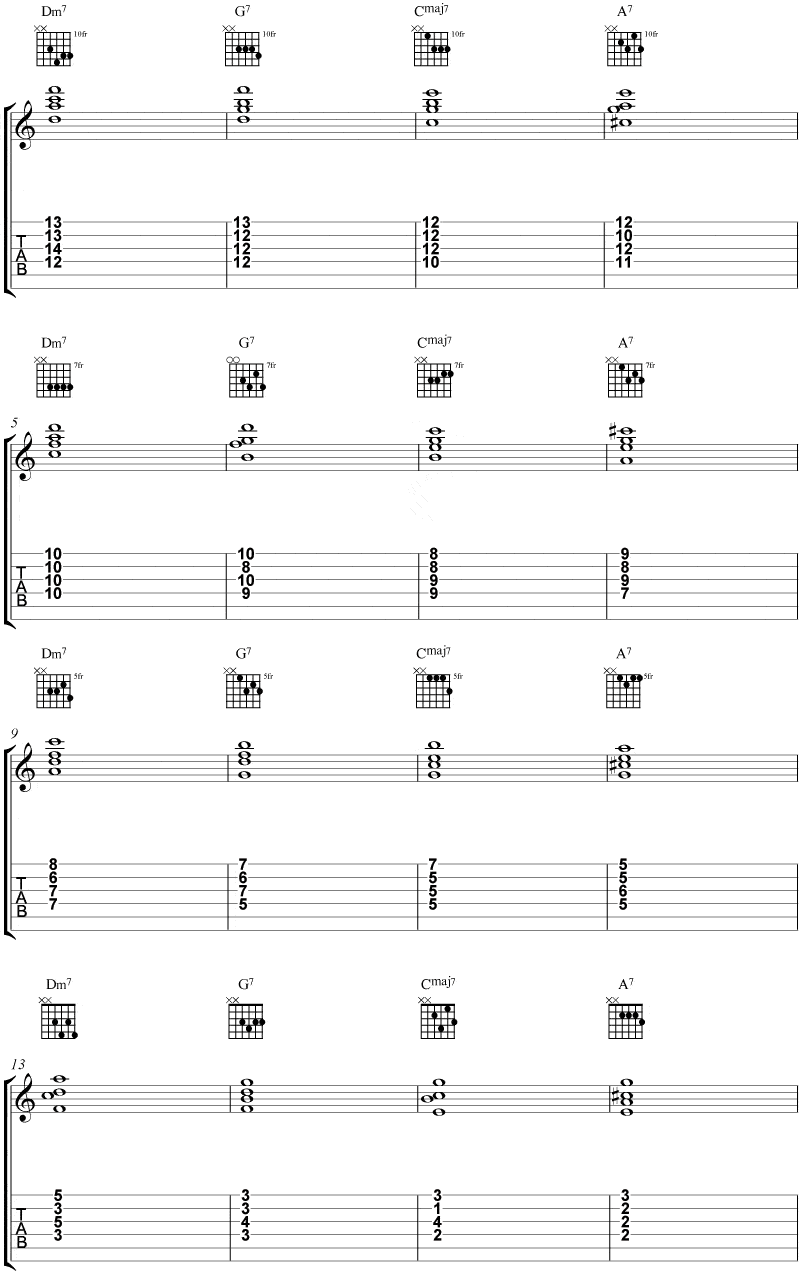
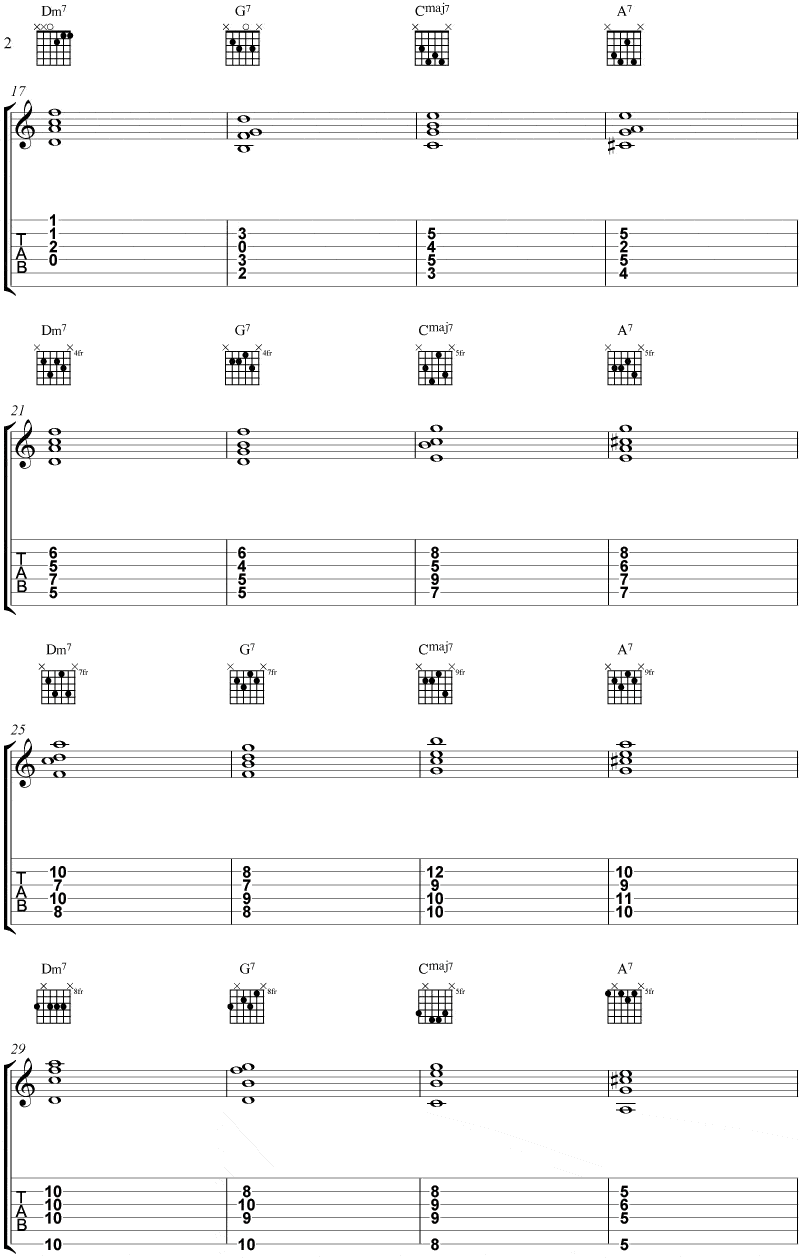
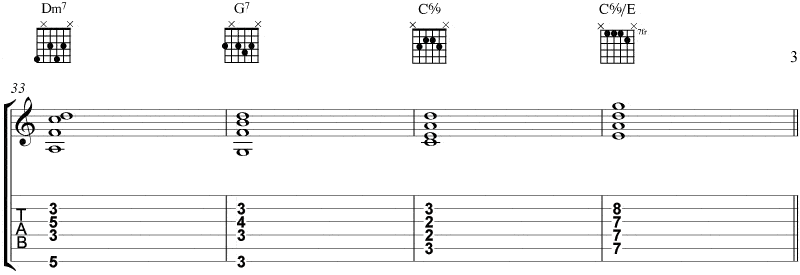
The post Chord Inversions appeared first on Jazz Guitar Online | Free Jazz Guitar Lessons, Licks, Tips & Tricks..
from Jazz Guitar Online | Free Jazz Guitar Lessons, Licks, Tips & Tricks. http://bit.ly/2SNjLOY
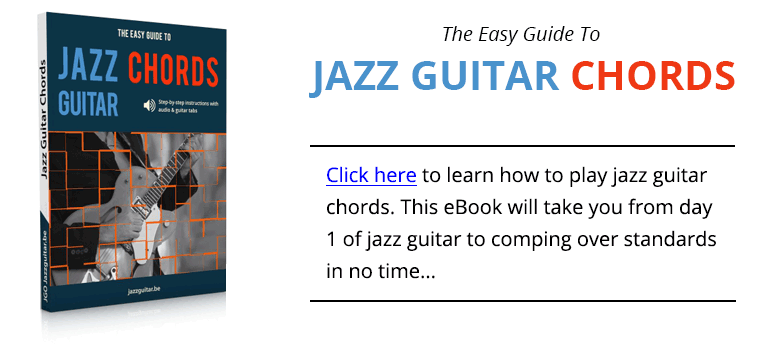
No comments:
Post a Comment